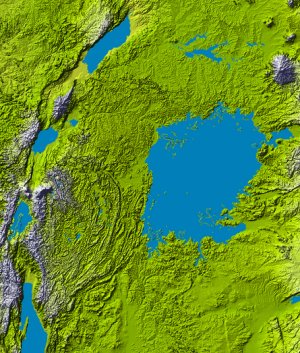Lake Victoria FactsTags: Lake Victoria, Lake Victoria Facts, Lake Victoria Map, Lake Victoria Africa, Lake Victoria Video, Lake Victoria Information |
|
Lake Victoria |
Lake Victoria |
Lake Victoria | Lake Victoria |
|

Beyond invasive species, the lake faces a relentless assault from pollution and overexploitation. Rapid population growth around its shores, coupled with inadequate waste management infrastructure, means vast amounts of untreated sewage, industrial effluent, and agricultural runoff (laden with pesticides and fertilisers) flow directly into the lake. This nutrient overload leads to eutrophication, causing algal blooms that deplete oxygen levels, creating "dead zones" where most aquatic life cannot survive. Overfishing, driven by increasing demand and a lack of effective regulation, further exacerbates the decline of fish stocks, including the introduced Nile Perch whose own populations are now showing signs of stress. Despite its ecological woes, Lake Victoria remains an indispensable resource for the East African countries sharing its waters. An estimated 40 million people live within its basin, with many directly dependent on the lake for their livelihoods. Fishing remains a cornerstone of the regional economy, providing employment and protein for millions. Beyond fishing, the lake supports agriculture through irrigation, facilitates trade and transport through water routes, and serves as a vital source of freshwater for domestic use. The hydroelectric power generated from the Nile's outflow is critical for the region's energy needs and industrial development. Its shores also hold significant potential for tourism, given their natural beauty and unique cultural heritage. Recognising the perilous state of Lake Victoria, regional and international efforts are underway to address its multifaceted challenges. The East African Community (EAC) has established the Lake Victoria Basin Commission (LVBC) to coordinate sustainable development and management initiatives. These efforts include promoting sustainable fishing practices, investing in wastewater treatment plants, encouraging reforestation and soil conservation in the catchment area to reduce sediment and nutrient runoff, and implementing campaigns to control water hyacinth. Research into restoring native fish populations and managing invasive species is also ongoing. The future of Lake Victoria hinges on a concerted and collaborative approach. Protecting this magnificent body of water requires effective governance, significant investment in infrastructure, community engagement, and a fundamental shift towards sustainable resource management. Lake Victoria is more than just a lake; it is a shared heritage, a source of life, and a testament to the interconnectedness of human well-being and environmental health. Its continued vitality is crucial for the prosperity and ecological balance of the entire East African region. This video above features a boat trip on Lake Victoria and gives a good look and feel of the lake, which you explore in more detail using our interactive map below. |








